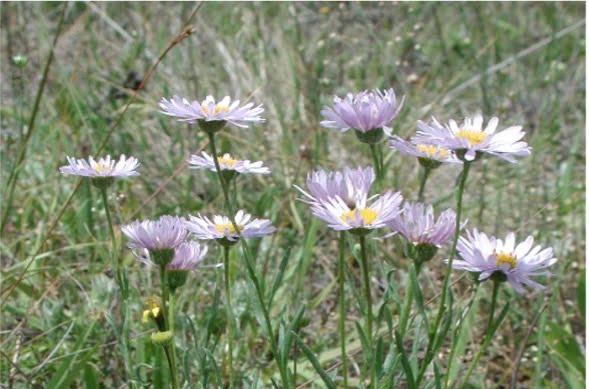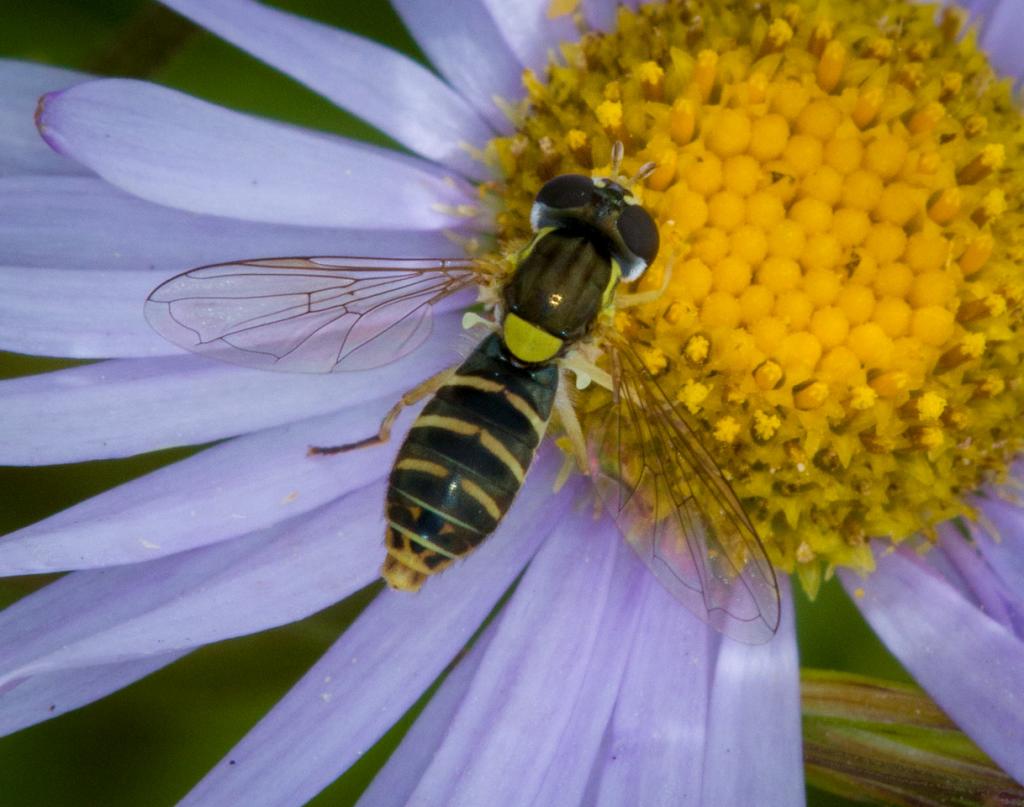
One step closer to Willamette Daisy recovery
May 2021
We are excited to announce that IAE has received a Recovery Challenge Grant from the U.S. Fish and Wildlife Service to work on the recovery of one of the Willamette Valley’s rarest prairie species, the Willamette daisy (Erigeron decumbens; Figure 1)! Willamette daisy is a perennial forb (herbacious plant) that is endemic to prairies in the Willamette Valley. Urban and agricultural development have greatly reduced prairie habitat in our region, leading to the decline of Willamette daisy, which was listed as endangered under the Endangered Species Act in 2000. The focus of this new grant is to increase the total number of Willamette daisy across the landscape and to improve Willamette daisy habitat. Sounds simple, right? Well, not exactly…
Over the past two decades, efforts to increase Willamette daisy abundance have had mixed results. In some instances, thousands of Willamette daisy plugs have been planted and only a few have survived. In other cases, Willamette daisy seed was successfully sown directly into prepared ground, resulting in new populations with thousands of plants. Even when establishment is successful, however, other factors can reduce the long-term success of Willamette daisy populations. Non-native species (e.g. non-native perennial grasses) can degrade habitat and outcompete native species, including Willamette daisy. Small and fragmented populations can lead to genetic bottlenecking and reduced seed viability. Declining pollinator populations can also affect the long-term sustainability of the population. The answer? Establishing as many populations with as many individuals as possible in as many places as possible throughout the historic range of this beautiful daisy.
One thing we have learned through past population augmentation efforts is that intensive site preparation is critical to the successful establishment of Willamette daisy. This species does not compete well with aggressive weeds, so the goal of this type of site preparation is to remove as many non-native species as possible, deplete the soil weed seed bank and remove all above ground biomass so that bare ground is exposed to increase seed-soil contact. The challenge with intensive site preparation is that it can be expensive, may take many years and sometimes involves harder-to-implement restoration techniques such as prescribed fire and herbicide application which require permits and/or licensed contractors.
One of the great things about the Willamette daisy Recovery Challenge project is that it facilitates a collaborative effort between IAE and our partners. Recovering listed species can only happen when we all work together, and opportunities like this grant leverage resources of many different partners to meet the challenges of restoring Willamette daisy. We are excited to work the following partners to restore prairie habitat and help recover Willamette daisy: U.S. Fish and Wildlife Service, Benton County Natural Areas and Parks, Greenbelt Land Trust, Polk Soil and Water Conservation District, Yamhill Soil and Water Conservation District, Confederated Tribes of the Grand Ronde, private landowners, multiple contractors and local farmers. We are grateful for the land, time, energy, invaluable site-specific knowledge and funding these partners are contributing to this project. Their level of positivity and dedication to recovering Willamette daisy and improving native habitat is through the roof! We are humbled by the opportunity to work with so many enthusiastic and wonderful people.
Meeting Willamette daisy recovery benchmarks will no doubt be difficult and problems will occur. However, with our collaborative approach, the partnership’s deep knowledge of restoration based on science, and the enthusiasm and willingness to go out and get our hands dirty, we are optimistic that this project will be successful and provide a model for future Willamette daisy recovery efforts.
Restoration
Research
Education
Contact
Main Office:
4950 SW Hout Street
Corvallis, OR 97333-9598
541-753-3099
info@appliedeco.org
Southwest Office:
1202 Parkway Dr. Suite B
Santa Fe, NM 87507
(505) 490-4910
swprogram@appliedeco.org
© 2025 Institute for Applied Ecology | Privacy Policy


